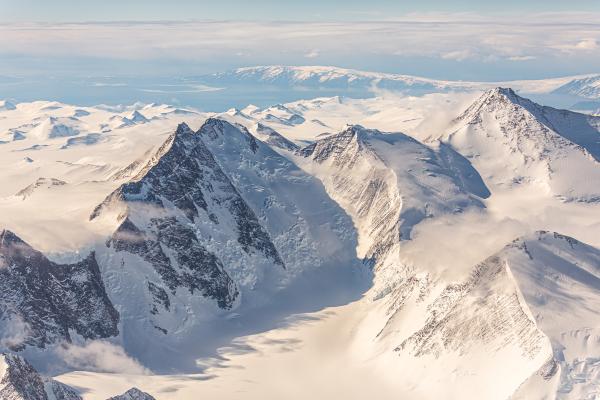Geologist Help Reveal Hidden History of Transantarctic Mountains

A recent study has provided a clearer understanding of a long-mysterious chapter in Antarctica’s geological history.
The research was conducted by a team of scientists from multiple institutions, reflecting a broad and collaborative effort. Contributing researchers included Timothy Paulsen (1996 Byrd Scholar) and Maddie Young from the Department of Geology at the University of Wisconsin Oshkosh; Jeffrey Benowitz from the University of Colorado Boulder; Stuart Thomson from the University of Arizona; John Encarnación (1994 Byrd Scholar) from Saint Louis University; Anne Grunow the Polar Rock Repository (PRR) research group at The Ohio State University’s Byrd Polar and Climate Research Center; and Paul Layer from the University of Alaska Fairbanks.
Together, these researchers combined expertise in geology, geochronology, and tectonics to analyze rock samples that offered new insights into the formation and evolution of the Transantarctic Mountains. The study, which appeared in the journal Earth and Planetary Science Letters, draws on ancient rock samples from PRR to uncover new insights into the evolution of the Transantarctic Mountains.
Spanning nearly 2,000 miles, the Transantarctic Mountains form a massive barrier dividing East and West Antarctica. Despite their scale and significance, a critical portion of their geological timeline has remained incomplete. Scientists have long understood that tectonic activity shaped the region around 500 million years ago and again approximately 100 to 150 million years ago. However, the events that occurred between these periods were largely unknown until now.
Paulsen and other researchers examined selected rock samples from the repository’s archive of more than 60,000 specimens. Their analysis revealed signs of significant geological activity during the so-called “quiet period,” including mineral evidence of cooling events and erosion that pointed to continued tectonic shifts. These findings challenge the assumption that the region was geologically inactive during this time and suggest that mountain uplift and landscape transformation occurred much earlier than previously believed.
The study highlights how these earlier processes played a role in shaping the current structure of the Transantarctic Mountains. Understanding this deep history provides scientists with a more complete picture of how Antarctica’s landscape developed over hundreds of millions of years.
This work also underscores the value of scientific collections like the PRR. The ability to revisit and reanalyze stored rock samples using modern techniques allows researchers to uncover new information from existing materials, sometimes rewriting entire chapters of Earth’s history.
The research and its findings were recently featured in Discover Magazine in an article titled “Rock Library Reveals the Mysteries of the Transantarctic Mountains.”
The piece highlights how the collaborative efforts of scientists like Paulsen are helping to unravel the complexities of Earth’s distant past through careful study and innovation.
